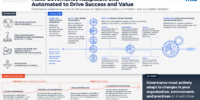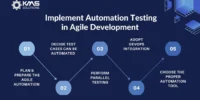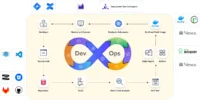In the digital era, where data is hailed as the new currency, effective data management is paramount for organizations seeking to harness the full potential of their information assets. Becoming a data governance guru involves mastering the art of organizing, storing, and utilizing data strategically. In this guide, we’ll explore quick tips that will elevate your data management skills to guru status.
1. Define Clear Data Governance Policies
Start by defining clear data governance policies that align with your organization’s goals and regulatory requirements. These policies should encompass data quality standards, security protocols, and guidelines for data access and usage.
2. Establish a Robust Data Governance Framework
Build a comprehensive data governance framework that outlines the processes, roles, and responsibilities for effective data management. This framework serves as the blueprint for how data is handled across the organization. ️
3. Ensure Data Quality and Accuracy
Prioritize data quality and accuracy by implementing validation checks, data cleansing processes, and regular audits. Clean, accurate data is the foundation for informed decision-making and reliable analytics.
4. Implement Data Security Measures
Protect sensitive data by implementing robust security measures. This includes encryption, access controls, and regular security assessments. Safeguarding data ensures compliance with regulations and builds trust with stakeholders. ️
5. Create a Data Catalog
Develop a centralized data catalog that provides a comprehensive inventory of all data assets within the organization. This catalog facilitates easy discovery of datasets, promotes data reuse, and enhances collaboration among teams.
6. Enable Data Transparency
Promote data transparency by providing clear documentation on the origin, structure, and usage of datasets. Transparent data practices foster trust among data users and contribute to a culture of accountability.
7. Establish Data Ownership and Stewardship
Assign data ownership and stewardship responsibilities to individuals or teams. Data owners are accountable for the quality and integrity of specific datasets, ensuring a clear line of responsibility for each piece of information.
8. Implement Data Lifecycle Management
Implement data lifecycle management processes that define how data is created, stored, utilized, and retired. Understanding the lifecycle of data ensures that resources are optimized, and outdated or irrelevant data is responsibly handled. ️
9. Facilitate Collaboration Across Teams
Promote collaboration among different teams within the organization. Data governance is a collective effort, and cross-functional collaboration ensures that diverse perspectives contribute to effective data management practices.
10. Stay Compliant with Data Regulations
Stay informed about data regulations relevant to your industry and geographical location. Regularly update data governance policies to ensure compliance and mitigate the risk of legal repercussions. ⚖️
Conclusion
Becoming a data governance guru involves defining clear policies, establishing a robust framework, ensuring data quality and accuracy, implementing security measures, creating a data catalog, enabling transparency, establishing ownership and stewardship, implementing lifecycle management, facilitating collaboration, and staying compliant with data regulations. By incorporating these quick tips into your data management strategy, you’ll elevate your skills and contribute to the organization’s success in the data-driven landscape. Happy data governing!








